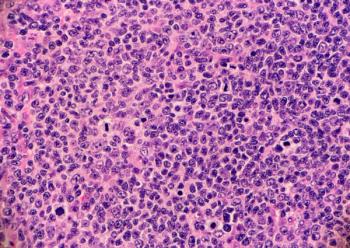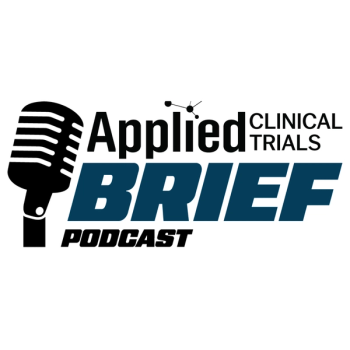
Modernizing Recruitment with Data, HCP Networks, and Last Mile Support
Learn how organizing data assets, activating nonresearch HCPs, and building referral pathways with compliant remuneration can convert identified patients into enrolled participants.
In a recent video interview with Applied Clinical Trials, Matt Holms, vice president of sales at Citeline, discussed the persistent barriers slowing patient recruitment and how technology and data-driven strategies can help modernize clinical trial operations. He outlined factors such as site performance variability, investigator scarcity, and protocol complexity as key contributors to trial delays, emphasizing the need for more realistic protocol design informed by real-world data. Holms explained how AI and tokenization can strengthen patient–protocol matching, streamline feasibility, and support responsible data use. He also highlighted the importance of therapeutic area–specific recruitment approaches, sponsor-led site selection oversight, and engagement with non-research healthcare providers to expand patient access—calling for greater industry collaboration to create a more efficient and equitable recruitment ecosystem.
The below interview transcript was lightly edited for clarity.
ACT: Based on your experience, what practical steps can clinical operations teams take now to modernize their recruitment strategies?
Holms: There are a couple of different ways they can go. Certain sponsors obviously have incredibly valuable data in-house. The question is, how well has that data been managed? Is it in silos? Do they have it in a place where it’s all talking to each other?
Certain sponsors are going to have really valuable data in-house. How well it’s organized is going to be the question. You’re going to have a lot more sponsors—typically the smaller ones—who don’t have that level of data, and they don’t have the resources to invest in those kinds of in-house tracking tools. They definitely need to go outside, and historically they have relied on the CRO.
Revisiting what I was saying at the end of the last piece, you’re definitely seeing less dependency on putting all their eggs in the basket of what the CRO recommends. So being able to use real-world data, not only with protocol design but also with site selection, is critical.
The other important piece we’re seeing in the industry gets back to that site scarcity issue. There isn’t this plethora or bolus of new investigators coming into the fray. Certainly, you have IROs like Elligo and Javara and other businesses that are trying to broaden access.
Where are the patients that meet your protocol but maybe don’t exist at your site’s location, yet exist near those sites? You’re seeing a lot more movement at the sponsor end to engage HCPs—I would call them non-research HCPs—that are either within the same affiliated health or hospital system as their PIs.
That’s very important for oncology because of the way oncologists are remunerated. They typically make revenue off how their buy-and-bill is structured with the chemo. But if they’re all part of the same health system, they’re all being remunerated from that system. So they’re more open to referring that patient.
You have medical affairs being more involved on the research side, engaging with these HCPs to try to create referral pathways. You have sponsors exploring remunerating HCPs—not for the actual referral, because that would violate the Anti-Kickback Statute—but for their time and chart review when finding that patient and referring them.
Because if you think about it, those 96% of patients that exist in the United States go to physicians that don’t do research. When you identify a patient that meets a protocol for an investigator down the street—and I’m a primary care physician or another oncologist and somebody contacts me—I don’t have the time. I don’t want to lose the patient, and there’s potential revenue loss.
Those are three pretty big obstacles the industry has always been grappling with, but I feel like there is a much stronger shift to trying to figure that out. It honestly starts with knowing that there’s a patient there.
At Citeline, one of the strong things we’re incorporating into our patient matching is that we’re not just identifying patients that meet a protocol in a certain moment in time at the site the sponsors already hired. We’re identifying when these patients exist and at which HCP, and we’re tracking this by NPI numbers, which are tied to the health and hospital systems. Then we’re trying to basically incorporate that “last mile,” which is a term you may have heard in the industry.
Think of the last mile as all of the support services that come into play with facilitating getting a patient to a site—that includes interaction with that patient, that referring HCP, and the site they’re coming to. That’s a critical part of getting that patient, once identified at a non-research HCP, over to the actual PI.
It’s not simple. It’s not a quick fix. There are a lot of elements that go into it. But you’re starting to see more vendors that specialize in this, which really complement what we’re doing with our data. You’re also starting to see more sponsors putting in some of those mechanisms to build relationships with those HCPs, so they can be told when there’s a patient who meets their protocol in real time—and have a referral pathway and appropriate remuneration to facilitate that.
So, getting back to your question about practical steps ClinOps teams can take—aside from real-world data for the protocol—using that data to not only identify what sites are good but also what sites have locations around them with a high volume of those patients is really important. Investing in mechanisms to facilitate that pull-through, which again starts with the data—you need to know that patient exists—is a big focus you’re hearing in the industry right now.
At the end of the day, we all want patients to get better access. I personally have a son with special needs. We did a clinical trial when he was four; he’s nine now, and it was an amazing experience. I’m a huge advocate for patient access, and it’s not just a job for me—it’s a passion.
Seeing what we have here at Citeline with our data and how powerful it is, I really think the industry is making strides to improve the process and ultimately get patients access to opportunities they wouldn’t otherwise have known about.
It’s a very comprehensive issue to tackle. There are a lot of stakeholders with different interests, and there are a lot of pieces to this that differ by indication, too. So there’s no silver bullet. But I think that at the end of the day, with the added data, technology, and AI that we have, we’re making really strong strides.
And I’ll just close by saying I really think the future is not just one company doing this right—one recruitment company—it’s collaboration. That’s really our focus here at Citeline. We have amazing data. We can identify these patients. But if sponsors have different site-interacting resources or specialty partners that we can collaborate with, we want to do that.
Newsletter
Stay current in clinical research with Applied Clinical Trials, providing expert insights, regulatory updates, and practical strategies for successful clinical trial design and execution.




